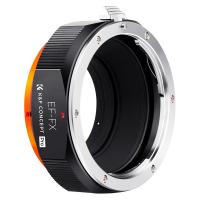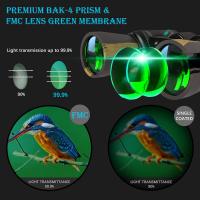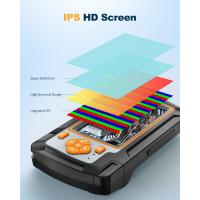How Have Microscopes Developed Over Time ?
Microscopes have undergone significant development over time. The earliest microscopes, such as the simple magnifying glass, date back to the 13th century. In the 17th century, Antonie van Leeuwenhoek improved the design and achieved higher magnification by using a single lens microscope. The invention of the compound microscope in the late 16th century, with multiple lenses and an adjustable focus, marked a major advancement.
In the 19th century, the development of achromatic lenses reduced chromatic aberration, improving image quality. The introduction of oil immersion techniques in the late 19th century further enhanced resolution. The 20th century saw the rise of electron microscopes, which use beams of electrons instead of light to magnify specimens, allowing for even higher resolution and the ability to visualize smaller structures.
Advancements in technology have led to the development of various specialized microscopes, such as fluorescence microscopes, confocal microscopes, and scanning electron microscopes. These advancements have revolutionized scientific research and enabled scientists to explore the microscopic world in greater detail, leading to numerous discoveries and advancements in various fields, including biology, medicine, and materials science.
1、 Invention of the compound microscope
The invention of the compound microscope marked a significant milestone in the development of microscopy. The compound microscope, which utilizes multiple lenses to magnify objects, was first developed in the late 16th century. It allowed scientists to observe and study microscopic organisms and structures in unprecedented detail.
Over time, microscopes have undergone numerous advancements and improvements. In the 17th century, Antonie van Leeuwenhoek, a Dutch scientist, further refined the microscope by developing a single-lens microscope, known as the simple microscope. This innovation allowed for even higher magnification and resolution, enabling the observation of smaller objects.
In the 19th century, the introduction of achromatic lenses greatly improved the quality of microscope images. These lenses corrected for chromatic aberration, a distortion of colors that had previously hindered the clarity of microscopic observations. This advancement led to clearer and more accurate images, enhancing the understanding of cellular structures and processes.
The 20th century witnessed significant advancements in microscopy technology. The development of electron microscopes revolutionized the field by allowing scientists to observe objects at an atomic level. Electron microscopes use a beam of electrons instead of light, enabling much higher magnification and resolution. This breakthrough opened up new avenues of research in fields such as nanotechnology and materials science.
In recent years, there have been further advancements in microscopy techniques. Super-resolution microscopy techniques, such as stimulated emission depletion (STED) microscopy and structured illumination microscopy (SIM), have pushed the limits of resolution beyond the diffraction limit of light. These techniques have allowed scientists to visualize structures and processes at the nanoscale, providing valuable insights into cellular dynamics and molecular interactions.
In conclusion, the development of microscopes has been a continuous process of refinement and innovation. From the invention of the compound microscope to the latest advancements in super-resolution microscopy, these instruments have played a crucial role in expanding our understanding of the microscopic world.

2、 Advancements in lens technology
Microscopes have undergone significant advancements over time, primarily due to advancements in lens technology. The development of microscopes can be traced back to the 17th century when the first compound microscope was invented by Antonie van Leeuwenhoek. However, it was not until the 19th century that significant improvements were made in lens technology, leading to the development of more powerful microscopes.
One of the key advancements in lens technology was the introduction of achromatic lenses in the early 19th century. Achromatic lenses helped to reduce chromatic aberration, which is the distortion of colors that occurs when light passes through a lens. This improvement allowed for clearer and more accurate observations under the microscope.
Another significant development was the invention of the oil immersion technique in the late 19th century. This technique involved placing a drop of oil between the lens and the specimen, which increased the numerical aperture and improved the resolution of the microscope. This advancement allowed scientists to observe smaller and more detailed structures.
In the 20th century, the invention of electron microscopes revolutionized microscopy. Electron microscopes use a beam of electrons instead of light to magnify specimens, allowing for much higher magnification and resolution. Transmission electron microscopes (TEM) and scanning electron microscopes (SEM) became essential tools in various scientific fields, enabling researchers to study the ultrastructure of cells and even individual atoms.
In recent years, there have been further advancements in microscopy, such as the development of super-resolution microscopy techniques. These techniques, including stimulated emission depletion (STED) microscopy and structured illumination microscopy (SIM), have pushed the limits of resolution beyond the diffraction limit of light. This has allowed scientists to visualize structures at the nanoscale level, providing new insights into cellular processes and disease mechanisms.
In conclusion, advancements in lens technology have played a crucial role in the development of microscopes over time. From the introduction of achromatic lenses to the invention of electron microscopes and super-resolution techniques, these advancements have continually pushed the boundaries of what can be observed and studied under the microscope.

3、 Introduction of electron microscopes
Microscopes have undergone significant developments over time, revolutionizing our understanding of the microscopic world. From the early simple magnifying glasses to the advanced electron microscopes of today, the evolution of microscopes has been driven by technological advancements and the need for higher resolution and greater magnification.
One major milestone in the development of microscopes was the introduction of electron microscopes in the 1930s. Unlike traditional light microscopes, electron microscopes use a beam of electrons instead of light to visualize specimens. This breakthrough allowed scientists to observe structures at a much higher resolution, revealing details that were previously invisible.
The first electron microscope, developed by Ernst Ruska and Max Knoll, used a magnetic field to focus the electron beam and produced images with a resolution of about 50 nanometers. Since then, electron microscopes have continued to evolve, with improvements in resolution, magnification, and imaging techniques.
Modern electron microscopes can achieve resolutions down to a few picometers, allowing scientists to study the atomic and molecular structures of materials. They also offer various imaging modes, such as scanning electron microscopy (SEM) and transmission electron microscopy (TEM), each providing unique insights into different types of specimens.
In recent years, advancements in electron microscopy have focused on improving imaging speed and sensitivity. Techniques like cryo-electron microscopy (cryo-EM) have gained prominence, enabling the visualization of biological samples in their native state. Cryo-EM has revolutionized structural biology, allowing researchers to study complex biomolecules and understand their functions at an atomic level.
Furthermore, the integration of electron microscopy with other imaging techniques, such as X-ray spectroscopy and tomography, has expanded the capabilities of electron microscopes. These advancements have opened up new avenues of research in fields like materials science, nanotechnology, and life sciences.
In conclusion, the introduction of electron microscopes marked a significant milestone in the development of microscopy. Over time, electron microscopes have evolved to provide higher resolution, greater magnification, and improved imaging techniques. The latest advancements in electron microscopy have focused on speed, sensitivity, and integration with other imaging modalities, enabling researchers to explore the microscopic world with unprecedented detail and clarity.

4、 Development of scanning probe microscopes
Microscopes have undergone significant advancements over time, enabling scientists to explore the microscopic world with increasing precision and detail. One notable development in the field of microscopy is the invention of scanning probe microscopes (SPMs). SPMs have revolutionized our understanding of materials and biological systems by providing high-resolution imaging and manipulation capabilities at the atomic and molecular levels.
The first SPM, the scanning tunneling microscope (STM), was developed in the early 1980s by Gerd Binnig and Heinrich Rohrer. The STM works by scanning a sharp tip over a sample surface while maintaining a constant current between the tip and the surface. This allows for the visualization of individual atoms and the measurement of surface properties with atomic resolution. The STM opened up new avenues for studying surface structures and paved the way for the development of other SPM techniques.
Another significant advancement in SPM technology is the atomic force microscope (AFM), which was introduced in the late 1980s. Unlike the STM, the AFM does not rely on tunneling current but instead measures the forces between the tip and the sample surface. By using a cantilever with a sharp tip, the AFM can map the topography of a sample surface with exceptional resolution. Additionally, the AFM can be used to measure various properties such as mechanical, electrical, and magnetic forces at the nanoscale.
Since their inception, SPMs have continued to evolve and diversify. For example, scanning near-field optical microscopy (SNOM) combines the principles of AFM with optical techniques, allowing for the visualization of optical properties at the nanoscale. Additionally, advancements in SPM technology have led to the development of techniques such as scanning thermal microscopy (SThM) and scanning electrochemical microscopy (SECM), which enable the measurement of temperature and electrochemical properties at the nanoscale, respectively.
In recent years, there has been a growing interest in combining SPM techniques with other imaging modalities, such as spectroscopy and imaging mass spectrometry. This integration allows for the simultaneous acquisition of structural, chemical, and functional information at the nanoscale, providing a more comprehensive understanding of complex systems.
In conclusion, the development of scanning probe microscopes has revolutionized the field of microscopy by enabling high-resolution imaging and manipulation at the atomic and molecular levels. These advancements have not only expanded our knowledge of materials and biological systems but also opened up new possibilities for nanotechnology and various scientific disciplines. With ongoing research and technological advancements, the future of SPMs holds great promise for further enhancing our understanding of the microscopic world.































There are no comments for this blog.